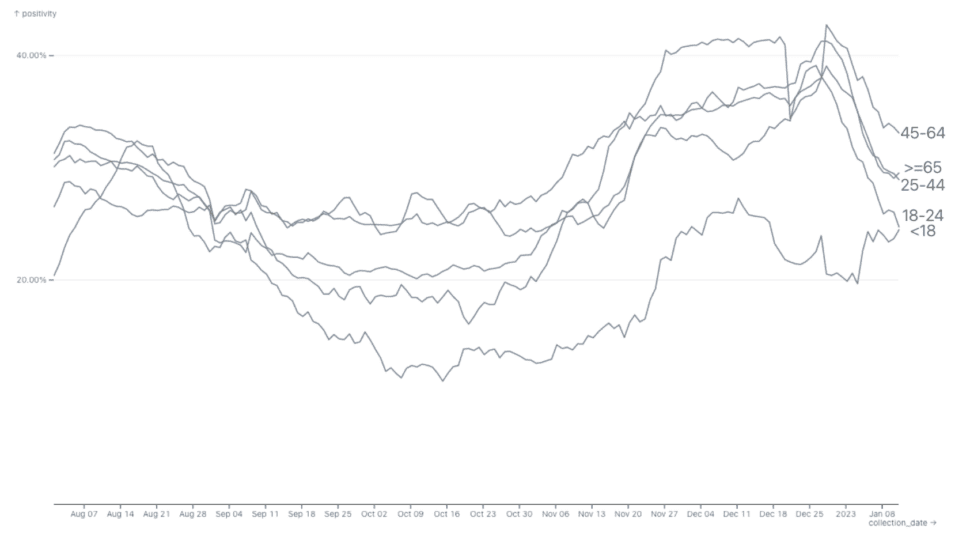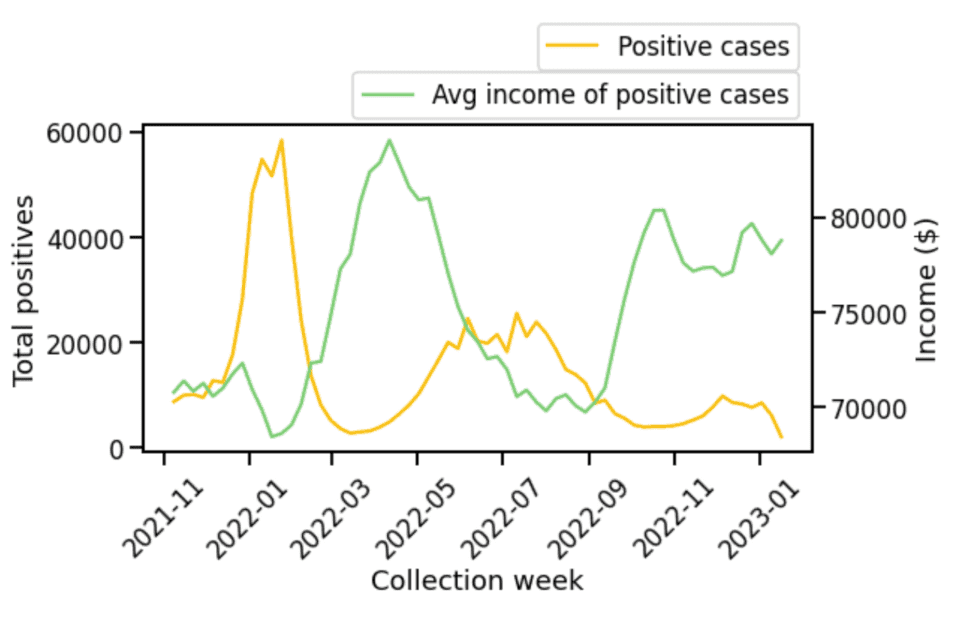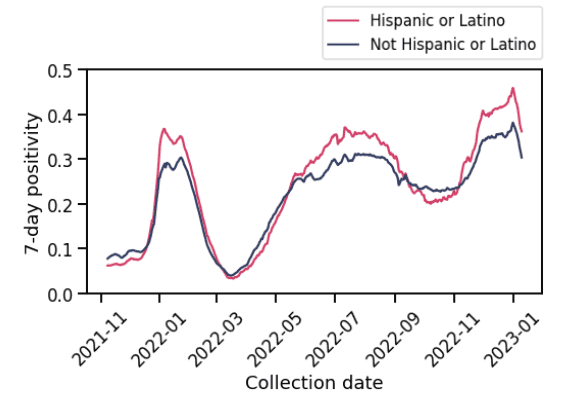Top Viral Surveillance Insights: COVID cases have peaked

COVID and flu cases appear to have officially peaked in the US. Our top takeaways for the week:
- COVID cases, hospitalizations and wastewater levels are all trending down.While XBB.1.5 is still growing fairly rapidly (in the west now, along with the northeast and south), it is not translating into an overall increase in cases. There has been a more recent rise in positives for those under 18 years old, but we hypothesize that this likely correlates with kids returning back-to-school from winter break.
Figure 1. COVID positivity by age shows a recent rise for those under 18 years old

- A new socio-economic analysis shows COVID surges have disproportionately impacted low income households, as well as Hispanic and Latino ethnic groups.What this could mean is that either lower income households are more likely to be infected by COVID during a surge, or that this group tends to get tested more when a surge is occurring.
On what could be a related note, while positivity rates across race and ethnicity groups range from 18-24%, Hispanic and Latino ethnic groups have consistently had positivity rates that are 6% higher than non-Hispanics or Latinos. While we don’t have the ability to correlate income, occupation or household size, this early study in 2020 showed a similar but much more dramatic difference with the conclusion that it was because “90% of those who tested positive could not work from home. Most were low-income, and most lived in households with three or more people.” While these findings may not be surprising, it does encourage public health campaigns to focus more closely on people of these demographics during outbreaks.
Figure 2. COVID surges are disproportionately impacting low income households
Figure 3. Hispanic and Latino ethnic groups have positivity rates that are 6% higher than non-Hispanics or Latinos


- Finally, as we are one of the only viral surveillance organizations that are also tracking other respiratory viruses, we are learning even more about other endemic coronaviruses in circulation. In particular, we’re seeing that while flu and COVID surges are typically the result of novel international imports, the endemic coronaviruses we’ve been watching seem to have a low level of domestic circulation in between seasons. In other words, cases from a current season seem to be derived from infections during the previous season, rather than coming from a novel variant from another country. This suggests international travel and importation restrictions may be less important for seasonal coronaviruses than for flu or even COVID-19.
Categories